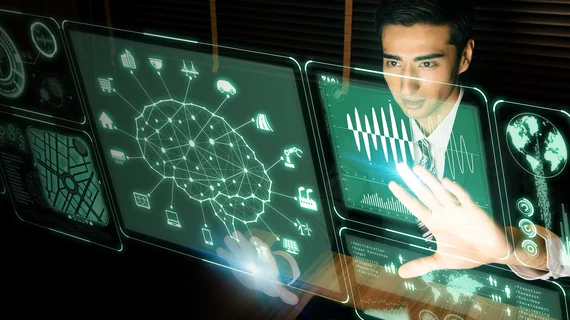Q&A: George Shih previews RSNA 2019, discusses AI’s impact on radiology
RSNA 2019 in Chicago is just days away, and the continued evolution of AI in radiology promises to be one of the hottest topics of the entire conference.
So what should attendees expect to see at the big show? And how are radiologists feeling about AI these days? We went to George Shih, MD, a radiologist at Weill Cornell Medicine and NewYork-Presbyterian and the co-founder of the healthcare startup MD.ai., to find out.
Shih, a member of RSNA’s Radiology Informatics Committee, has been tracking the rise of AI technologies for several years now. He spoke with AI in Healthcare about RSNA 2019, radiology’s “academic gold rush” and much more.
Read the full conversation below:
What can attendees expect to see at RSNA 2019 when it comes to AI? How does this differ from previous years?
There will be a significant amount of AI-related content this year at RSNA, including a notable increase in the number of scientific sessions. Each year for the last three or four years, we’ve been seeing a huge increase in the number of submitted abstracts that have to do with AI, and it’s been really exciting to see. A lot of the specialists who were focused on informatics before are now working with AI, and we’re seeing a lot of researchers come in to the space from outside of radiology. I think of it as an academic gold rush, where people are working to apply the latest AI techniques to both existing problems and brand new problems, and it’s all been really great for the field of radiology.
We’re also holding another machine learning competition this year hosted on Kaggle. In previous years, we’ve annotated existing public data that was used for our competition, but this year, we were actually able to acquire high-quality data—more than 25,000 CT examinations that nobody has used or seen before—from four different institutions. The top 10 winning algorithms will also be made public to anyone in the world, which is an amazing way to advance the use of AI in radiology. I think that’s one of the biggest contributions RSNA is making to the academic community this year.
The other exciting part is that our new and improved AI Showcase will include more vendors—more than 100—than any previous year, which shows just how much the market continues to focus on these technologies.
Is there anything happening right now with AI research that has you especially excited?
One interesting trend is that more of those scientific abstracts I mentioned before involve the evaluation of commercial algorithms. While there still isn’t a ton of adoption of AI clinically, I think this shows that that adoption is beginning to pick up right now more than people may realize.
Another exciting thing we’re seeing right now is that AI is starting to be used to tackle more complex tasks. Researchers are trying to predict if certain therapies are going to be effective or not for a specific patient, for example, as opposed to detecting or even classifying a suspicious lesion.
It’s just a really exciting time in general to be tracking AI. I don’t know when we’re going to hit the peak of AI research at RSNA—everything peaks at some point—but there’s still a lot of untapped potential for this technology and I don’t think it will peak anytime real soon. The gold rush is still ongoing on all fronts.
How does the average radiologist feel about radiology in 2019? I’m talking about the individual who may not have enough time to keep up with the academic journals or get online and read about industry news. Are they scared of AI? Are they paying attention?
My impression is that most radiologists are pretty excited about this. A lot of radiologists have been volunteering to help with AI-related research, for example, and there just seems to be a great deal of interest. More senior radiologists, however, may not be quite as excited—maybe they don’t have the same appreciation or maybe they just know it won’t affect them before they retire. The radiologists a little younger than that, the ones with a good 20 years or more left in their careers, are probably paying the most attention to it. It could affect them dramatically in the next five or 10 years, so they want to know what is happening.
And younger radiologists, on the other hand, are more tech savvy. They’ll just adapt and accept it as a part of the job, never knowing anything but what it is like to be surrounded by these innovative solutions and techniques.
Do you think AI will start impacting other healthcare specialties other than radiology on a more regular basis in the near future?
Radiology’s huge advantage is the data. Radiologists started collecting DICOM data a good 20 years before everyone else, so it just kind of made sense for medical AI to begin with radiology. The other specialties are starting to get more organized, however, so we will definitely see activity begin to pick up in the next couple years.

